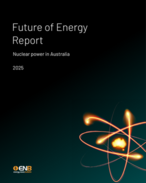This article is 18 years old. Images might not display.
“This range and the most likely volume of 65MMbbl are similar to the volume of oil in the Puffin Northeast region now being developed by AED,” the company said.
“Recovery factors for the SW are likely to be broadly similar to those for the NE and are estimated to range from 40% to 70%, depending upon the areal extent and shape of the reservoirs, reservoir quality and performance and the mode of development.”
The Puffin Southwest region is about 10km from the current field development over the Puffin NE region and has been penetrated by two discovery wells, Puffin-2 (drilled in 1974 by ARCO) and Puffin-9 (drilled in 2006 by AED).
Puffin-2 discovered oil in the upper sand (the UK1a) but the lower sand, the LK1a, was water-bearing with residual oil saturations. Puffin-9, 1900m southeast of the Puffin-2 well, discovered oil in both the UK1a and the LK1a sands.
To better define the southwest region’s oil volumes and reserves, AED plans to drill an appraisal/development well on the structure, most likely updip of Puffin-2, in October, as part of a confirmed three-well drilling program over the broader Puffin area.
“This well will further test the concept that the Puffin-2 and Puffin-9 UK1a reservoir sands form a single continuous accumulation [and] will test the updip potential of the LK1a sand in the Puffin-2 structure,” AED said.
An extensive review of geological, geochemical and engineering data by the company’s subsurface consultants has found “significant evidence” supporting the presence of a single, extensive oil pool, in the UK1a reservoir, according to AED.
“This common, continuous pool in the UK1a reservoir encompasses both the Puffin-2 and Puffin-9 well areas,” the company said.
“Supporting evidence includes similar oils, pressure data, sand thickness and petrophysical properties, and stratigraphic data. The oils in the UK1a at Puffin-2 and Puffin-9 appear identical in properties, including oil gravity (46API), with detailed geochemical analyses indicating that the oils are from the same pool.”
The company is also committed to additional seismic processing and interpretation, including re-processing of an earlier BHP Petroleum-generated 3D seismic survey and horizon-based velocity analysis. Bids for this work have been recently received and are now being evaluated, and this work is expected to be completed in three months, according to AED.
“Conceptual planning, examining possible development options for the Puffin SW region is also underway and includes the possibility of a separate development for the SW which is in shallower water than the NE,” AED said
Development options for the Puffin SW region include combined development, with the Puffin NE region using the Front Puffin floating processing, storage and offtake vessel or a standalone development for the SW region.






















